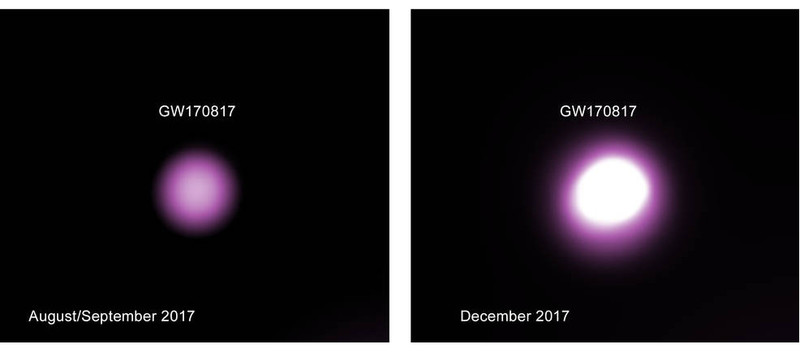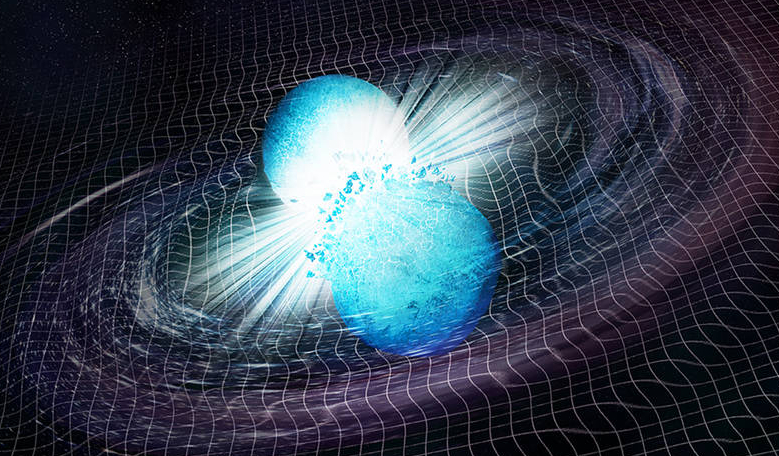When the Laser Interferometer Gravitational Wave Observatory (LIGO) announced the discovery of gravitational waves from the merger of two neutron stars last year, it was the first discovery of its kind. Now, the event known as GW170817, has likely captured something else for the first time: the birth of the lowest mass black hole ever found.
GW170817 was a different type of gravitational wave event than the first few ground-breaking ones before it, because this time the ripples permeating through the fabric of space-time were caused not by two colliding black holes but by the merger of two neutron stars instead.
Black holes and neutron stars both form from the same thing – massive stars, and it is the mass of the star that determines how the star will end its life. A star with a mass greater than about 20 times the mass of our Sun for example may produce a black hole at the end of its life, whereas stars with around eight solar masses or more can produce a neutron star after it has exploded as a supernovae.
But what happens if two neutron stars collide? If this were to happen astronomers theorise that the newly singular object would generate a very strong magnetic field as it spun very rapidly. The production of the field then initiates an expanding bubble of high-energy particles that emits light as bright X-ray emission.
Purposely watching the event alongside LIGO was NASA’s Chandra X-ray Observatory and it was looking for exactly that - a maelstrom of electromagnetic activity that would signal the creation of a massive neutron star. However, the newly analysed data has revealed the opposite – a distinct lack of X-rays – which therefore implies that the merged object is in fact a black hole.
“We may have answered one of the most basic questions about this dazzling event: what did it make?” said co-author Pawan Kumar of the University of Texas at Austin. “Astronomers have long suspected that neutron star mergers would form a black hole and produce bursts of radiation, but we lacked a strong case for it until now."
While the resulting object of GW170817 is not completely clear cut, if it turns out not to be the formation of the lowest mass black hole ever recorded, then the answer is most definitely the creation of the most massive neutron star ever discovered, weighing in at about 2.7 times the mass of the Sun.
“GW170817 is the astronomical event that keeps on giving,” said J. Craig Wheeler, a co-author on the study also from the University of Texas. “We are learning so much about the astrophysics of the densest known objects from this one event.”
If follow-up observations confirm that a heavy neutron star has indeed survived, this would challenge theories for the structure of neutron stars and how massive they can get. Conversely, if the product is a black hole then it too implies that their formation is not always so straight forward either. For this latter scenario to occur it would mean that two neutron stars from two supernova explosions found themselves sufficiently close together before spiralling inwards and merging.
“At the beginning of my career, astronomers could only observe neutron stars and black holes in our own galaxy, and now we are observing these exotic stars across the cosmos,” said co-author Bruce Gossan of the University of California at Berkeley. “What an exciting time to be alive, to see instruments like LIGO and Chandra showing us so many thrilling things nature has to offer.”

Purple material from the GW170817 event depicts debris from the merger. Image: NASA/CXC/Trinity University/D. Pooley et al.











